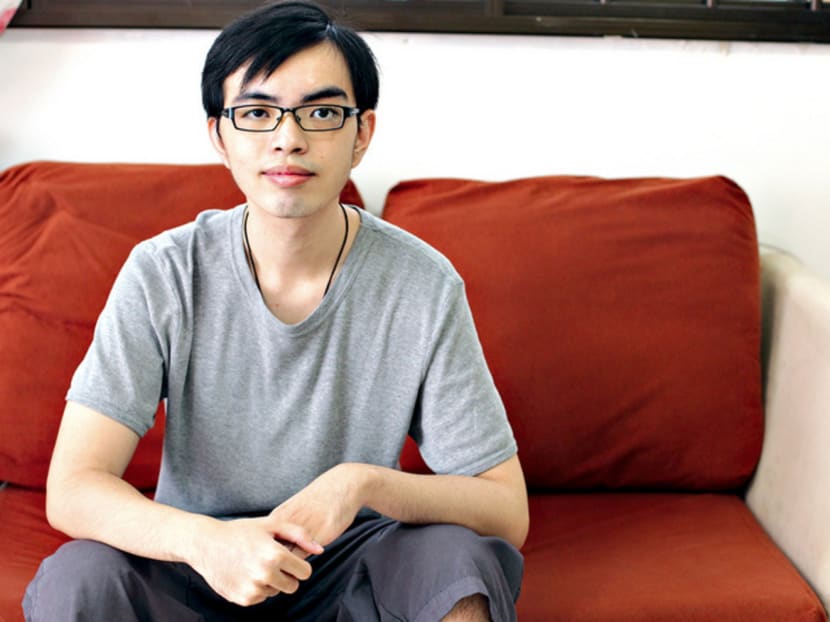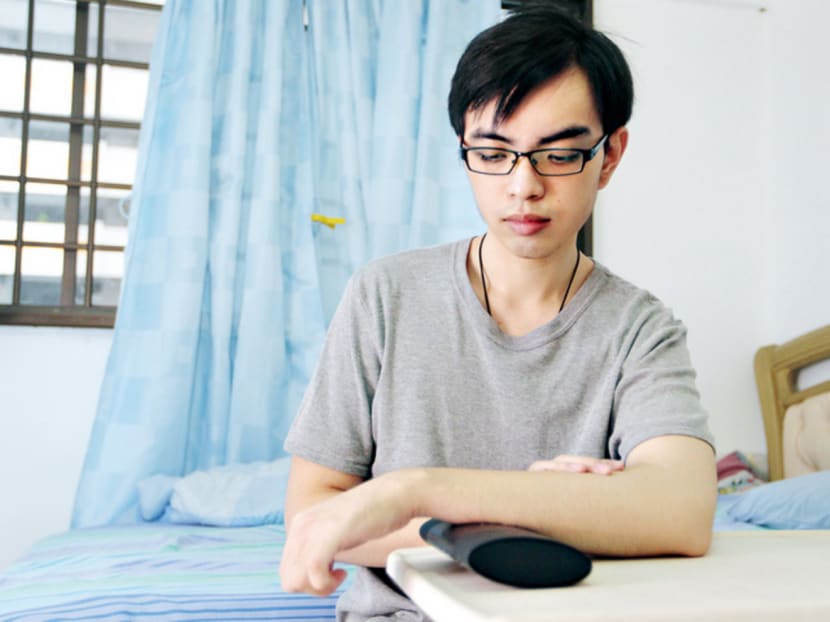A stroke of bad luck
SINGAPORE — While his polytechnic peers embarked on new opportunities after their graduation, 20-year-old Lee Yong Jie spent the better part of this year learning to swallow, control his hand movements and bowels, sit up as well as walk steadily.


SINGAPORE — While his polytechnic peers embarked on new opportunities after their graduation, 20-year-old Lee Yong Jie spent the better part of this year learning to swallow, control his hand movements and bowels, sit up as well as walk steadily.
In January, Mr Lee suffered a massive stroke which left him on the brink of death. The polytechnic graduate recounted how he had collapsed while giving a presentation during his internship stint.
“All of a sudden, I felt drunk. Then, I couldn’t feel the left side of my face. I’ve watched enough TV to know that I was having a stroke. I was so scared and I remember telling myself I don’t want to die,” he said.
Against all odds, the youth survived the ordeal. But when he awoke after a major brain surgery, he had become, in his own words, “like a baby again”. Besides losing basic functions, the stroke also affected his short-term memory and planning skills.
“I was unable to do things on my own. I was frustrated and depressed at first. But I told myself to snap out of depression when I saw how sad my mum and girlfriend were seeing me so upset. I told myself to be strong for them, so they can be strong for me,” he said.
STROKE CAN happen at any age
The fourth leading cause of death in Singapore, a stroke can occur when an artery to the brain is either blocked by a blood clot (ischemic stroke) or when it ruptures (haemorrhagic stroke). Only a fifth of all stroke cases are haemorrhagic strokes, which Mr Lee experienced.
The average age of local stroke cases in 2012 was 68 years, figures from the Singapore Stroke Registry showed.
Haemorrhagic stroke occurring under the age of 40 is “relatively rare” as it is usually associated with increasing age and hypertension (high blood pressure), said Mr Lee’s doctor, Dr Vincent Ng Yew Poh, consultant at the Department of Neurosurgery at the National Neuroscience Institute.
A common misconception is that stroke happens only in older adults. In fact, it can happen at any age, even among children, said Dr Eric Hong Cho Tek, consultant cardiologist and internal medicine physician at Mount Elizabeth Medical Centre.
About 2 per cent of 6,280 stroke cases in 2012 were under the age of 40 years.
“Even though stroke in the young population is significantly less common than in older individuals, the odds of a stroke may increase if patients have one or more risk factors,” said Dr Hong.
Risk factors include unhealthy lifestyle habits such as smoking, being overweight or obese, a diet high in salt and saturated fat, physical inactivity, excessive alcohol consumption and stress.
STROKE CAN BE PREVENTED
Up to 80 per cent of all stroke cases can be prevented, said Dr Hong.
“The key to prevention is identifying and reducing modifiable risk factors. For example, cholesterol, which is one of the risk factors, can be effectively managed through a combination of lifestyle modification and the right medical treatment.
“Other medical conditions that increase risk of stroke — including high blood pressure, atherosclerosis and diabetes — should be well controlled,” said Dr Hong.
However, not all factors can be controlled. There are also “non-modifiable” factors that can put a person at risk of stroke, added Dr Hong.
For Mr Lee, who has a clean bill of health and no bad lifestyle habits, the stroke was caused by a rupture in an abnormal blood vessel that he was born with.
Following his collapse, Mr Lee underwent an intensive seven-hour surgery to partially remove a blood clot from the right side of his brain. Part of his skull was also removed during the surgery and he now wears an artificial skull on the right side of the head.
Mr Lee also recently underwent radiosurgery, which uses radiation to eliminate the abnormal blood vessel. It is located too deep in the brain to be fully removed via surgery, said Dr Ng.
road to normalcy
It will take about two to three years for the radiosurgery to be fully effective. In the meantime, Dr Ng shared that Mr Lee faces a risk of getting another stroke if the abnormal blood vessel ruptures again.
At the moment, his doctor has advised him against over-strenuous exertion and to avoid sudden surges in blood pressure to prevent another stroke.
“It is important for Yong Jie to continue with physical rehabilitation to achieve greater mobility and functional recovery,” added Dr Ng.
Mr Lee has come a long way since the early days following his stroke and is on the road to recovery. For his resilience, he is one of 27 patients and 11 caregivers who will be honoured at the Singapore Health Inspirational Patient and Caregiver Award 2015. They were nominated by healthcare professionals from the respective SingHealth institutions as well as participating organisations such as Home Nursing Foundation and Ren Ci Hospital.
Although Mr Lee has not fully recovered the use of his hands and legs, he considers this a minor issue compared with the days when he could not even sit up or control his bowels.
The health scare has also given him a new perspective on life. “The stroke has made me a more positive person. My body may not be functioning the way it used to, but I’m thankful my heart and mind still are,” he said.





